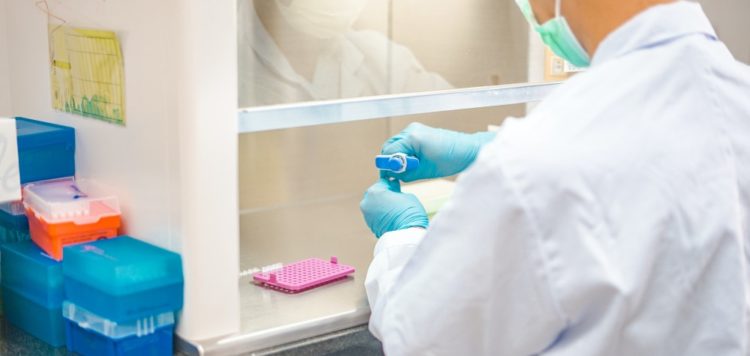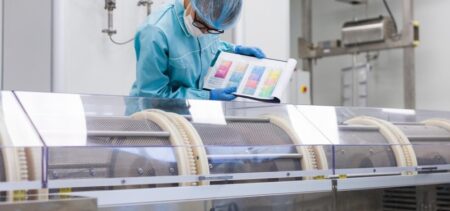The COVID-19 pandemic has demonstrated that it is essential for biopharmaceutical organizations to act quickly and become flexible in production.
Experts, such as the CHEManager International team, view four factors as unsolved challenges. They claim that the first challenge is COVID-19 related. The pandemic has demonstrated that sudden outbreaks of the disease require biopharmaceutical production that is flexible, simple to scale, and ready to be adapted to new technologies for the adaptations and variants of the Coronavirus. New antibodies and vaccines must be developed and produced at an incredibly fast pace.
The second challenge is that of managing stock levels. Biopharmaceutical organizations must keep margins high in an environment that requires investments in R&D. This is a complex and difficult challenge, especially because the number of stock-keeping units (SKUs) has been increasing since 2006. This specific challenge is made more complex due to the wide variations in volume demand.
The third challenge is the shift that is driving the pharmaceutical industry to modular construction. The usual facilities are in constant construction and are incredibly difficult to repurpose. Finally, the last challenge shows that new policies are driving the biopharmaceutical industry towards greater flexibility. Among these policies are new immunization programs and regulatory aspects such as new laws like the Drug Supply Chain Security Act (DSCSA), and updates to the GMP regulations.
The solution
The solution to the above challenges lies within flexible and smart biopharmaceutical production units. A total of 45% of decision-makers in Biopharma are dedicated to single-use bioreactors that can reduce changeover times by minimizing the cleaning effort. Modeling a mAb production process in E.Coli shows that the number of batches produced per year can increase by 117%.
Whilst single-use technology has the potential to address the mechanical aspects of flexibility, the plug and play concept addresses the software aspect of flexibility. Plug and Play provide interoperability by allowing standardized communication among devices from several suppliers. It also provides information transparency by the standardization of naming report data and parameters.
The future
The report by Deloitte Insights demonstrates that throughout the next 20 years, certain forces, both from inside and outside the industry, will reshape Biopharma’s business models. Actionable insights that are driven by interoperable data and artificial intelligence can help clinicians to identify illnesses and diseases much quicker than we do today. Early interventions, such as vaccines, have the potential to prevent a higher number of diseases from developing. Shifts in how diseases are prevented, identified, and treated can lead to largely different business models for the traditional Biopharma companies.
The Deloitte Center for Health Solutions questioned 14 leaders in academia and digital health to discover how they expect the prevention, identification, and treatment of disease to change or develop in the next 20 years. In their answers, five forces emerged that have the potential to alter the entire course of the biopharmaceutical industry. They include:
- Prevention and early detection – Advances in early detection can slow down diseases in their early stages before they progress to serious conditions.
- Custom treatments – Medicine that is driven by data-powered insights could match patients with personalized drug treatments or design therapies that would work for just a handful of people, or even just one individual.
- Curative therapies – Treatments that have the potential to cure diseases can reduce the number of prescription medications. Marketing and pricing these treatments could require the biopharmaceutical industry to adopt new capabilities.
- Digital therapies – Effective digital interventions such as those focused on modifying behavior could also reduce the need for pharmaceuticals.
- Precision intervention – Sophisticated medical technology, such as interventions by nanotechnology or tissue engineering, can reduce the need for pharmaceutical intervention.
These forces are likely to reduce the market for Biopharma products—unless the industry can redefine the types of products and solutions they will offer. Company leaders need to develop strategies to counter potential threats to the industry and to leverage the short and long-term opportunities that occur in the ever-changing and developing environment. Those who ignore the forces for change could end up shrinking with the need for drug intervention.
Positive Opportunities for the future of Biopharma
The senior director of Strategic Consumer Relations at Cytiva, Günter Jagschies, states that untreated medical needs must be the focus of the future of the biopharmaceutical industry. There are still multitudes of diseases and illnesses that have no treatments. As a result, there are many opportunities for companies to develop new drugs to combat the symptoms or find a cure for certain diseases.
Examples of such illnesses include cancer, Alzheimer’s, Parkinson’s, and diabetes to name a few. Jagschies goes on to explain that the industry should not give up on the cures to such diseases and illnesses, as there will be massive rewards for those who do manage to make an impact on these diseases.
Summary
There are many challenges ahead for Biopharma, such as the invention of new technological advancements that could reduce the number of biopharmaceutical drugs and interventions needed. However, it is essential to note that there are still many diseases that have no cure as yet. It is a great opportunity for the biopharmaceutical industry to capitalize on this and to attempt to cure the diseases that have taken so many people’s lives throughout history.






































